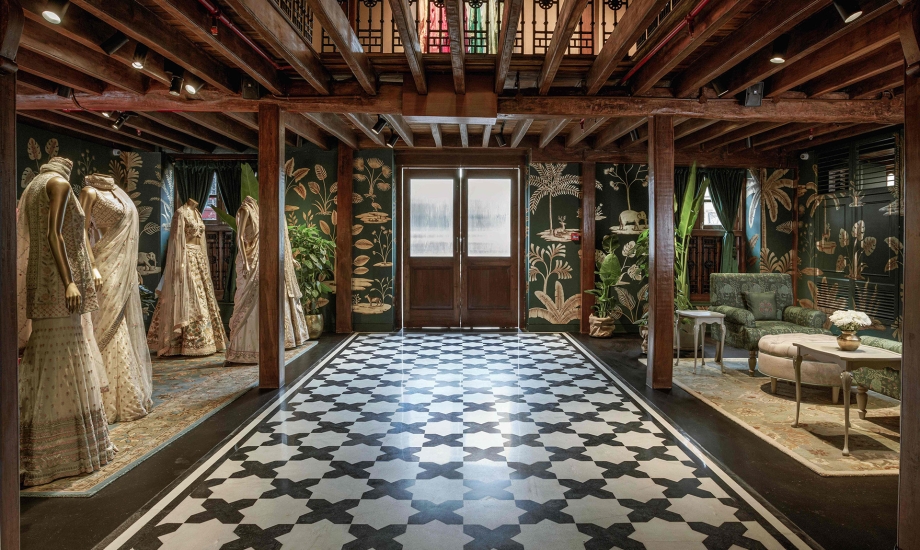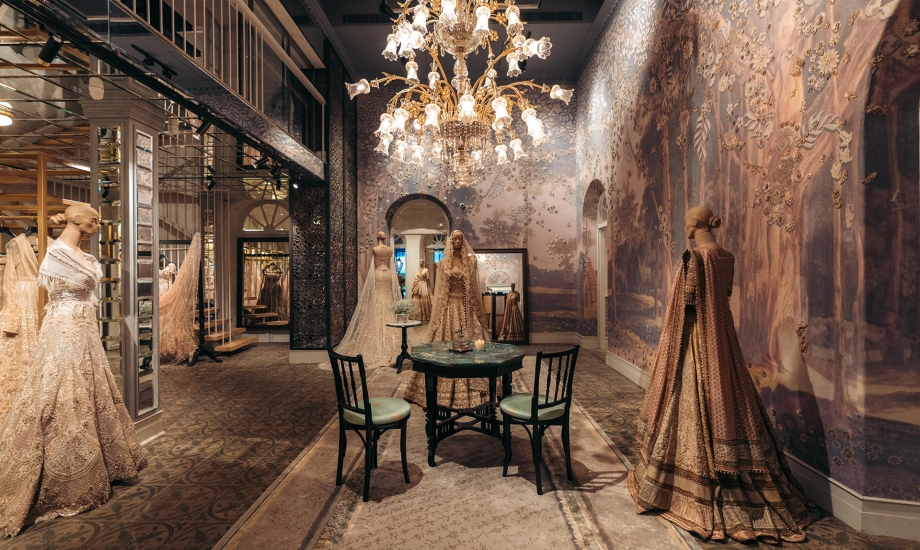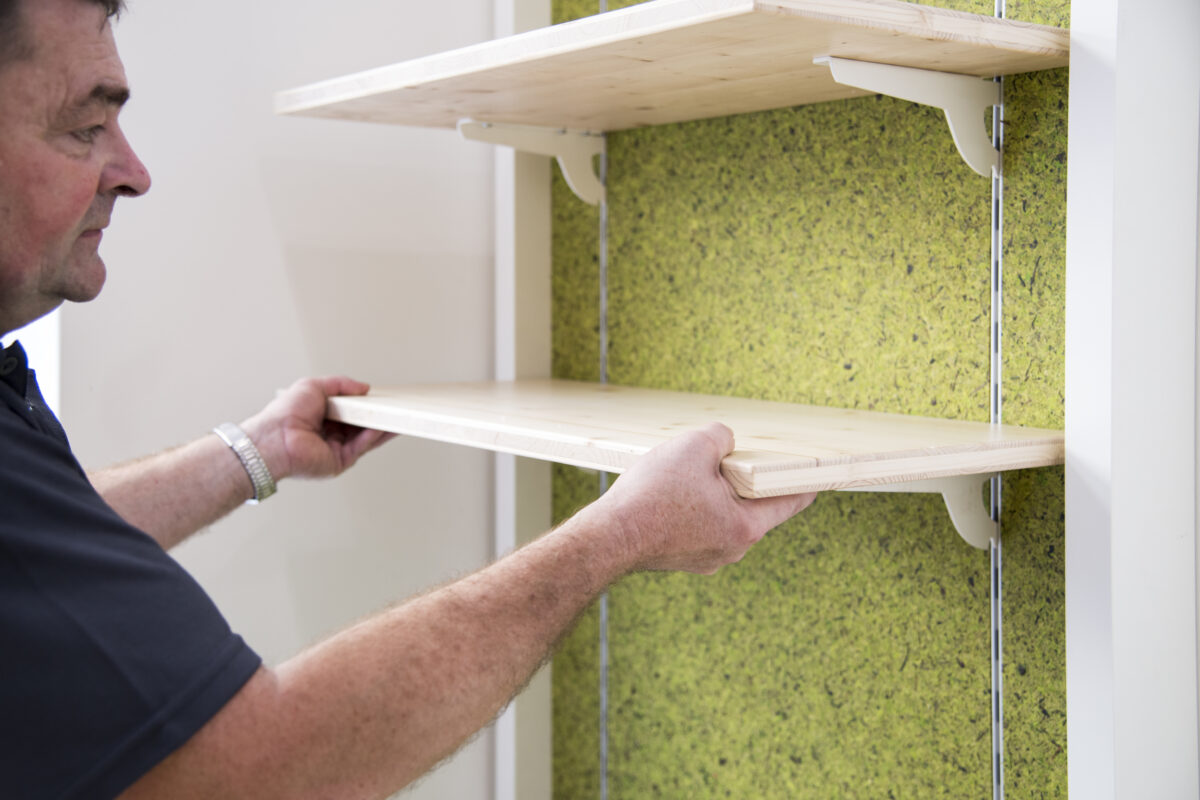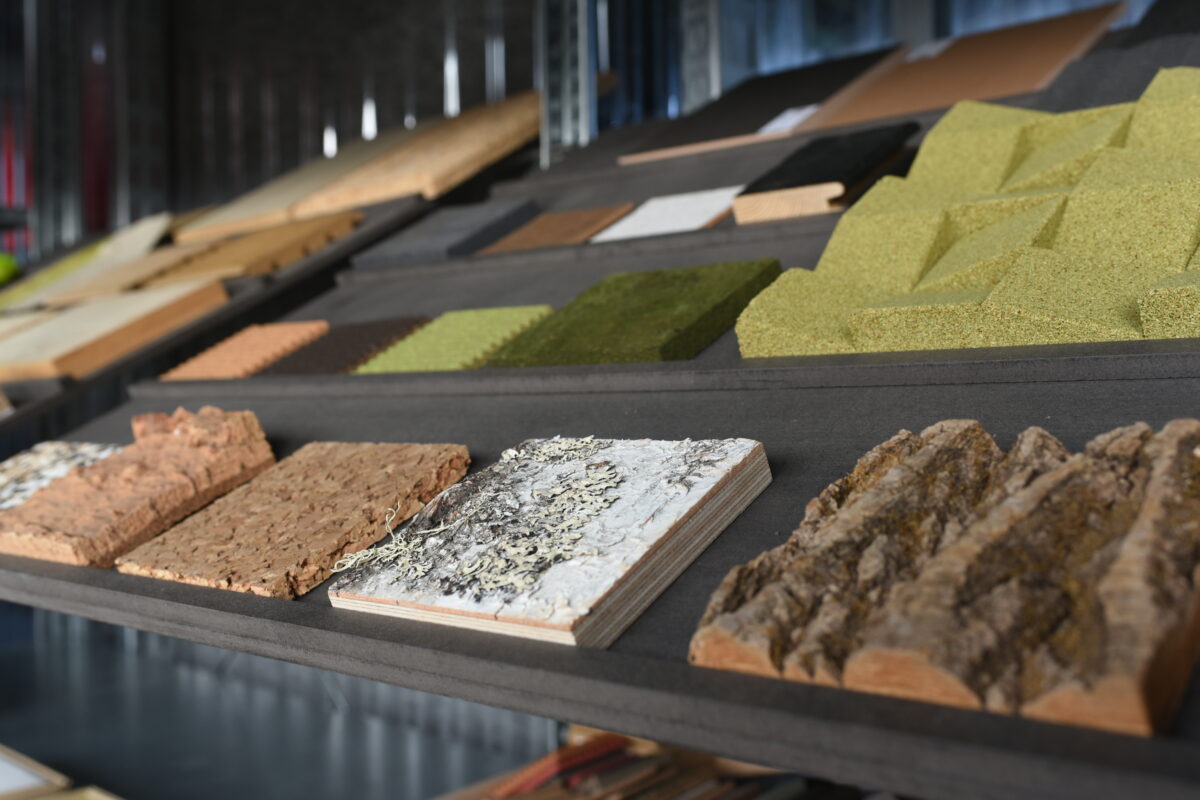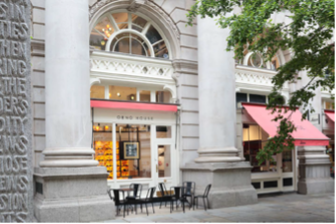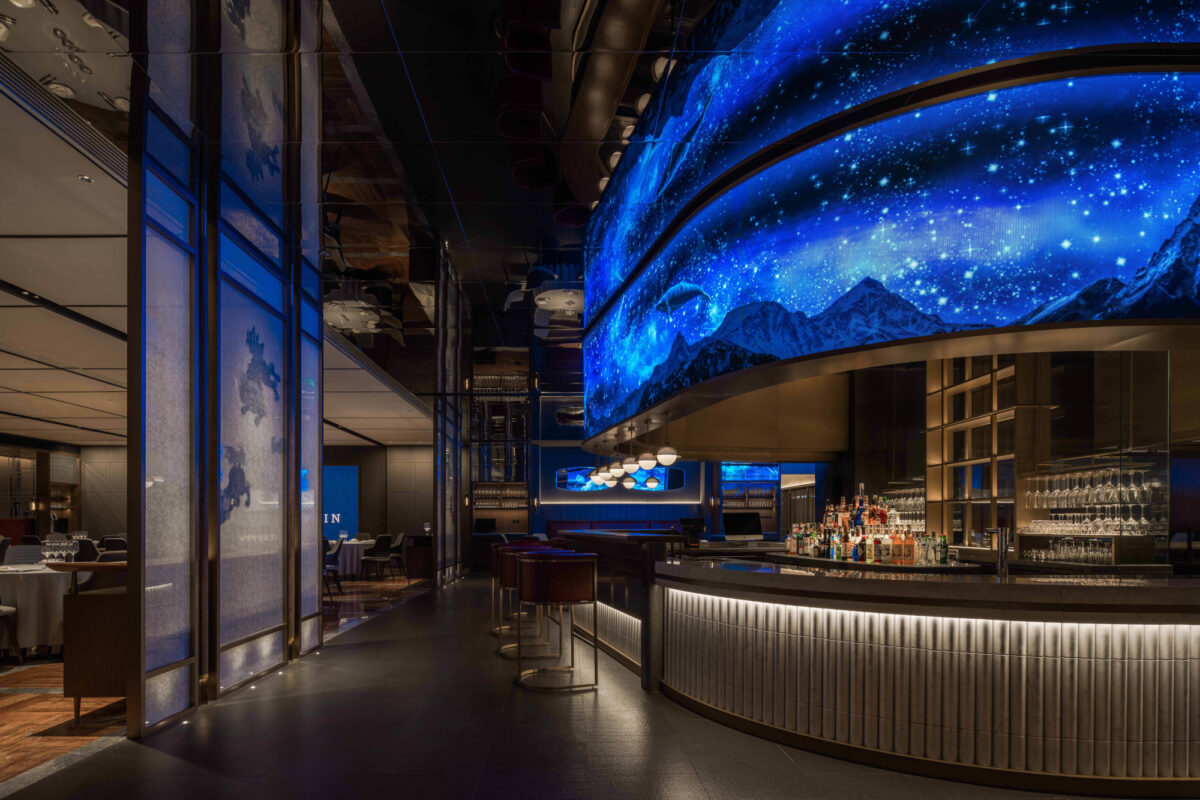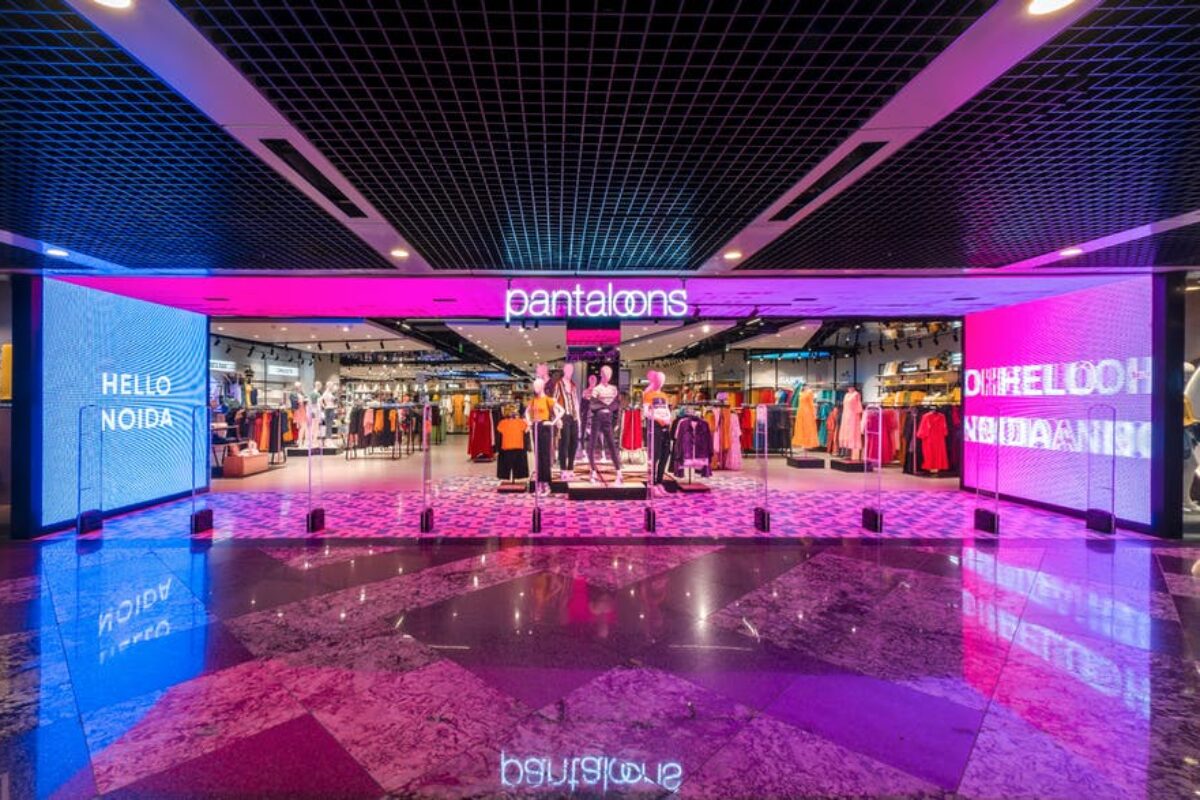by Katja Laska (exclusively for EuroShop.mag)
How do COVID-19 safeguards such as social distancing or hygiene measures affect retail store design experts and shopfitters? Here are some industry strategies and solutions.
Creative, attractive, and inviting – retail store designers, shopfitters, and visual merchandisers must always integrate these key criteria into their work. Pre-pandemic, they were free to let their imagination shine in stores. However, since the start of the outbreak, their creative minds must now skillfully incorporate certain safety guidelines into the store concept. How can this be accomplished?
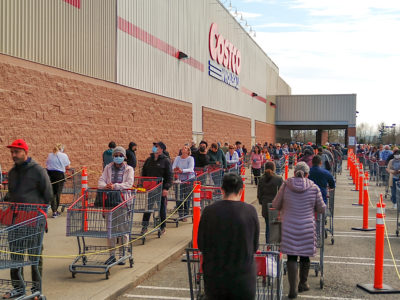
Provisionally created implementations of protection measures must give way to more sophisticated concepts so as not to deter customers. // ©PantherMedia / Ryan Faas
“All stores are allowed to reopen and must adhere to regulations on hygiene, monitor occupancy limits inside stores, and prevent lines from forming outside stores,” Germany’s government announced in early May 2020. The German retail sector heaved a huge sigh of relief. Meanwhile, the long-awaited resumption of business operations presented an enormous challenge for the creative community of shopfitters, retail store designers and visual merchandisers. After all, despite the reopening of stores, the German government also proposed strict limits on the maximum number of people (customers and employees) in stores in relation to the size of the sales floor.
This means visual social distancing signs, one-way walking systems and in-store signage are now prerequisites. These instructions must be clearly yet cleverly implemented in brick-and-mortar stores without appearing too makeshift in nature. What goes through a shopfitter’s mind when he or she hears these directives for the first time? “Initially, you thought of the many guidelines that have to be implemented on the sales floor, which was followed by concerns on how these measures can be adapted to where they don’t have a deterrent effect and prompt customers to feel constrained,” Frank Wilsch remembers, who at the time was in charge of planning and implementation of shopfitting, visual merchandising & display advertising at Knauber Freizeit. “Our goal was to ensure the continuity of the retail shopping experience, and adapt to any restrictions.” The German Shopfitting Association (dLv) also considers this a key premise: “In the time of Coronavirus, it is vital not to alienate customers – nobody wants to risk that shoppers migrate from stores to online retailers. Safety precautions must conform to the law, but should also create a pleasing visual impact,” the Association stated upon request.
Leaving it all out there on the floor
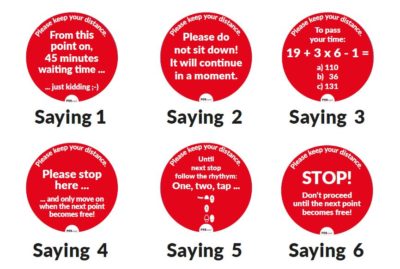
©POS Tuning
Pre-printed signs at entrances, store windows, and checkouts and red-and-white-striped caution tape should not be permanent solutions. The type of business also dictates the type of solution to manage the new situation. Wilsch explains: “A skillfully constructed protection shield guard made with wood beams and Plexiglas panels is certainly an acceptable option in a home improvement store. Meanwhile, stores that also sell a lifestyle besides their products and services should definitely make greater efforts.” And although there wasn’t all that much time for this prior to reopening, Wilsch still cautions against standard adhesive red tape markings on floors and does so not just for the sake of optics. “These floor markings can actually become a big problem later on because it is very difficult to remove them without damaging the floor underneath.” That’s why he recommends other simple yet effective options for floors. He recommends designated vinyl sticker “waiting points” as floor markers positioned throughout the stores. They don’t damage the flooring and can also promote corporate brand identity. The dLv has another helpful tip: “Custom floor stickers with puzzles are a creative way to make wait times feel shorter at the supermarket checkout.” Yet social distancing floor stickers are not the only messages retailers can communicate on floors. In these difficult times, stores also benefit from arrow decals that can guide customers and direct foot traffic. “It’s fairly easy to direct retail foot traffic with floor decals and posters at grocery service counters thanks to their inherent structure.” Things get at little more difficult when it comes to information desks, as these tend to be located right in the center of the departments. Another idea that helps direct customer flow: Setting up a reception or waiting area by using partition walls. Using retractable security barriers or well-placed retail displays is yet another way to control crowds and guide customers.
Good habits make customers feel safe
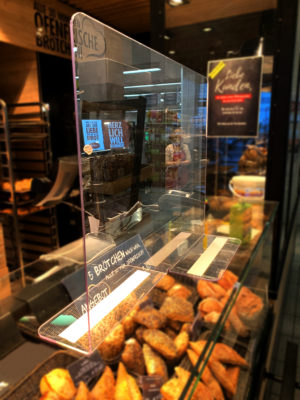
©POS Tuning
Despite variations in the different stores, there are aspects that all retailers should take into consideration and live by. “Retailers should rethink and redesign the entrance and walk-up areas of their stores and quickly educate customers on the new situation,” explains Chip Miller, retail store design expert and CEO of Miller Zell. The dLV Association urges retailers to set up automatic hand sanitizer dispensers and color-coded guidance systems at the entrance. As Miller points out: “The top priority for retailers is, and has always been, to make their customers feel safe and protected in their stores.” The dLv agrees and has another tip for retailers: “A grocery store disinfects shopping carts after each use? That’s something the store should communicate via a sign or other type of announcement.” And adds that despite the setup of alternative traffic systems, retailers should not completely change familiar in-store traffic patterns and maintain the original store layout as much as possible.
Although the safeguards have already been in place in Germany for several weeks and many makeshift solutions have since been replaced with more permanent and sophisticated alternatives, the dLv Association cautions retailers not to ease up on their efforts: “Brick-and-mortar retailers must seize this moment and play to their strengths of customer service and friendliness. One rule that was paramount pre-COVID-19 and is still the gold standard in retail store design today: The best experiences make customers keep coming back to your store.”






